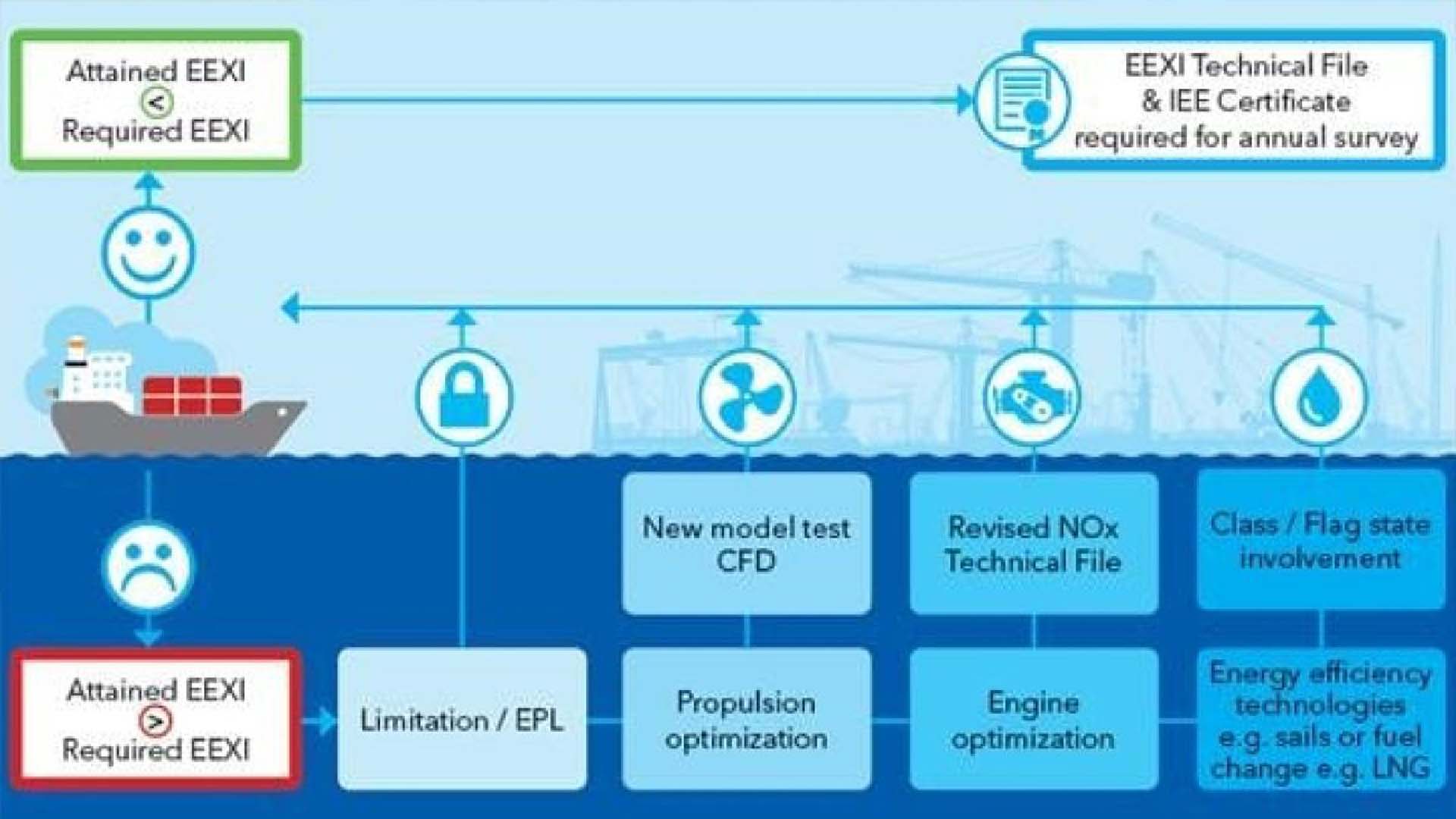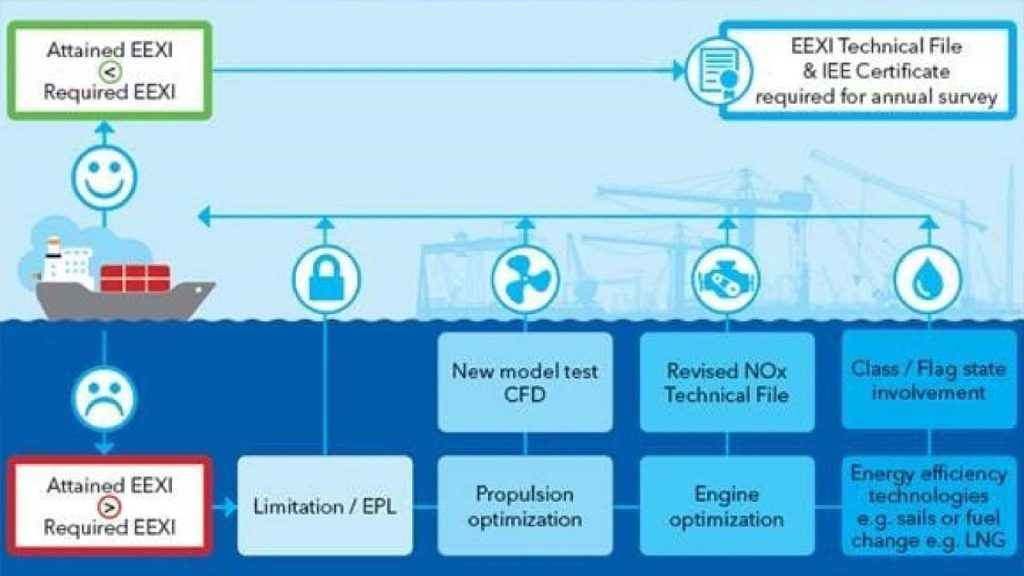When Can We Decarbonise Shipping?
As can be imagined, decarbonisation though sorely needed, cannot happen overnight. All kinds of hurdles are in place from financial commitments to the technological innovations needed to make it come to pass. So where does the world go from here. Jaya Prakash files this story.
A record number of bulk carriers are without the Energy Efficient Existing Ship Index (EEXI), according to press reports. That just may not be surprising given that some jurisdictions have lax regulations and monitoring. Now, that would mean either retrofitting for such vessels, or having their ‘final sacraments’ over at a scrapyard. Or be fobbed off to a buyer, foolish enough to buy them even for a song.
Whatever it may be, decarbonisation is here to stay and nowhere is that more apparent than in the many ‘diktats’, raised by international maritime bodies. Despite the best of efforts, shipping related emissions did rise in 2021, inferring as otherwise that decarbonisation efforts have hardly made a dent on international shipping!
Undoubtedly, the revelation from industry sources and press reports have made the IMO to sit up and take notice.
The global maritime body has of since 2021 adopted key mandatory measures to reduce carbon intensity and establish ship rating system. Its Marine Environment Protection Committee (MEPC 76) has adopted amendments to MARPOL Annex I to introduce a prohibition on the use and carriage for use as fuel of heavy fuel oil (HFO) by ships in Arctic waters on and after 1 July 2024.
These amendments combine technical and operational approaches to improve the energy efficiency of ships, also providing important building blocks for future GHG reduction measures. The new measures will require all ships to calculate their Energy Efficiency Existing Ship Index (EEXI) following technical means to improve their energy efficiency and to establish their annual operational carbon intensity indicator (CII) and CII rating. Carbon intensity links the GHG emissions to the amount of cargo carried over distance travelled.
Ships will get a rating of their energy efficiency (A, B, C, D, E – where A is the best), said the IMO.
IMO Secretary-General Kitack Lim said the adoption of the new measures would build on IMO’s previously adopted mandatory energy efficiency measures, to lead shipping on the right path towards decarbonisation.
“The path to decarbonisation is a long, but also a common path in which we need to consider and respect each other’s views. We have made a considerable amount of progress since the start of our journey,” Mr. Lim said, ” … your progress will continue to provide the benefit of experience to be able to make ambitious, and evidence-based decisions for phase 3 of the implementation of the operational measure which will be further strengthened and developed [considering] the review of the short-term measure and the latest climate science,” he added.
In adopting the amendments, the MEPC agreed in its resolution to undertake a lessons-learned exercise from the comprehensive impact assessment of the amendments to MARPOL Annex VI, with a view to improving the procedure for conducting future impact assessments.
MARPOL Annex VI has 100 contracting states, who between them represent 96.65% of world merchant shipping by tonnage. The MEPC also adopted a work plan to develop mid- and long-term measures to further cut shipping’s GHG emissions, in line with the Initial IMO strategy on reduction of GHG from ships.
The IMO must be lauded for what it is doing. It is taken off to a carefully, crafted start trying to shake up a global industry hemmed in by all manner of considerations from cost factors to the adoption of technological device to plain and inexcusable inertia coupled with full-blooded resistance.
Nothing in the grand scheme of things says more than to the resistance to all the new measures. Many shipowners and managers are nonplussed. To everybody minding their bottom line, annual profit statements to auditors and reaction of share prices, new cost burdens are undoubtedly a burden, in all but name!
So, what are the alternatives and how can ship owners improve their EEXI without reducing sailing speeds asked ship engine maker, Wartsila
“The adoption of new, cleaner fuels is currently a hot topic, but given that the deadline for compliance is only 18 months away adoption on a fleet-wide level seems highly improbable. There are, however, options in the form of already-available energy efficiency technologies”
Wartsila
“The adoption of new, cleaner fuels is currently a hot topic, but given that the deadline for compliance is only 18 months away adoption on a fleet-wide level seems highly improbable. There are, however, options in the form of already-available energy efficiency technologies” – Wartsila
Yet the niggling worry from says it like it is. A new marine fuel alternative is the real problem. And nowhere is that problem near any resolution because too many solutions have been found. Some have even advocated using renewable energy reserves from poorer nations as
Speed reduction may be an option. But that creates another problem of consignments arriving late and to incur demurrage. Hull design can be worked at, as well toying with the use of ammonia but the latter comes with safety implications.
As ship engines maker Wartsila argues, that the main components affecting a vessel’s propulsion efficiency are the hull, engine, and propeller. By carefully analysing the interaction between these components…. [one can] substantially increase operational efficiencies and cut costs for ship-owners and operators.
A far tighter proposition is the use of Energy Saving Device (ESDs) which Wartsila says will have a direct impact on vessel propulsion efficiency by reducing hull resistance and improving propeller thrust. High-performance hull coatings to reduce resistance and fouling and installing a replacement propeller are some of the other aces. Above all, energy savings of 5–10% can be achieved by combining ESDs and an optimised propeller.
“It is good because it gives annual audit of ships compared to having something over say, 5 or 10 years. That means the shipping industry can move incrementally towards full development” said an official from StormGeo based in Singapore.
Instead of throwing the baby out of the shower the benefits of EEXI and its certification illustrates what is a welter of benefits.
According to engine power limitation is raised, along with increases in a propellor retrofit, shaft generation and an increase in transport capacity, among others.
Mecklenburger Metallguss,recommends a retrofit of your propeller as that would mean reducing fuel consumption by up to 14% and improve the EEXI value of your vessel.

Diagram from DNV shows a linear exposition of the various stages a ship needs to undergo to attain EEXI certifications.
HYBRIDISATION
While a retrofit has obvious advantages for vessels with a dynamic positioning system, the advantages for merchant vessels are not so obvious. A hybrid system can optimise auxiliary, adds Wartsila, and engine utilisation on a merchant vessel, reducing running hours by introducing start-stop logic and optimising fuel consumption.
One thing to note is that the benefits of a hybrid system alone are not yet considered in the EEXI formula as it does not reduce the total installed power.
An EEXI impact of 4% and a vastly superior ROI can be expected when the hybrid system is intended to be an integral part of a ‘free power-source technology’ installation such as photovoltaic cells.
NO END IN SIGHT…
There obviously are competing schools of thought.
On the one hand there is the economic imperative for shipping. And yet on the other, there is the environmental challenge. For a healthy, functioning, and responsive market to develop initiatives ruled in by the IMO are indeed the steps to the future. In addition to COP26 and for green shipping corridors, global companies have set sustainability and emission-reduction targets.
Slow steaming has been advocated out of desperation but what it creates is the possibility of snarls at ports! The carbon intensity indicator ratings system may encourage more slow steaming from 2023 to limit CO2 emissions but, as we have seen in the 2021 bulker fleet, vessel speeds have been more responsive to market conditions than environmental objectives,” said an excerpt from Hellenic Shipping News.
Many steps have been taken in the right direction. But just how shipping will decarbonise hinges mainly from the findings of EEXI and how that finding charts the future of the maritime business.


